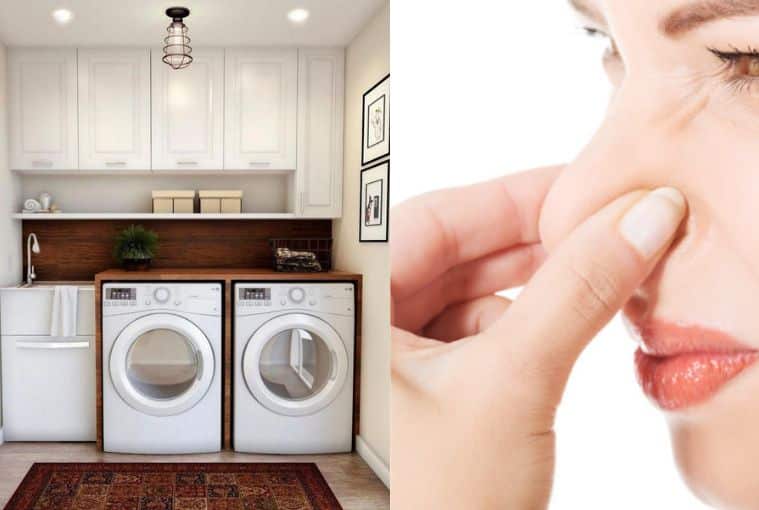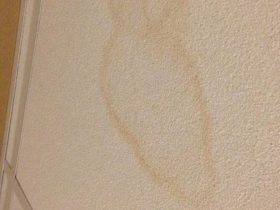Are you troubled by a foul, sewage smell coming from your laundry room? It is ironic how the laundry room, which is specifically dedicated to keeping your clothes clean and fresh, can smell like sewage and reek badly. While everyone tries to keep their houses fragrant and pristine, sometimes bad smells can occur through various sources in your laundry room.
The unpleasant odor can be both annoying and concerning. Apart from being a source of discomfort, it may also highlight issues that need immediate attention. But you have nothing to worry about. I am here to list out the possible reasons for your laundry room odor and explain the science behind them with a laundry room maintenance guide to help you in the long run. Make sure to read till the end to become a pro at learning laundry room odor elimination techniques.
6 Reasons Why Your Laundry Room Smells Like Sewage
1. Clogged Drainage Problem
As you might have already guessed, a clogged or blocked drainage system is among the top reasons behind producing a pungent smell. What happens is, over time, lint, debris, and soap scum get accumulated in the pipes. All these things block proper water flow, which ends up causing foul odors.
2. Can P-trap cause sewer smell?
Yes, a dry P-Trap can also produce a horrible smell. For all those who do not know what a P-trap is, it is a curved pipe under the sink or washing machine that holds a small amount of water. The purpose of this water is to create a barrier to prevent sewer gases from leaking. If the P-trap dries out or is improperly installed, sewage odors can escape into your laundry room.
3. Poor ventilation issue/ A Lack of Ventilation
Among other common problems is poor ventilation. It is vital that your laundry room should have adequate ventilation to keep the room fresh. Keep in mind that a lack of proper airflow can trap moisture and odors, leading to unpleasant smells.
4. Leaked Sewer Pipes
Leaking or damaged sewer pipes can give direct entry to sewage odors and waste into your laundry room. Be aware of cracks, corrosion, or tree root intrusion that potentially compromise the quality of your pipes, prompting sewer pipe repairs for your laundry room.
5. Improper Installation of Washing Machine Drain Hose
Another root cause of the bad smell could be the damaged or improperly installed drain hose of your washing machine. It causes water to accumulate and develop foul odors. Don’t forget to keep a watchful eye on your washing machine from now on!
6. Mold and Mildew Growth
It is natural for your laundry room to sustain a moist environment. However, the problem is that moist environments become ideal breeding grounds for mold and mildew in laundry rooms. These fungi can produce a musty, sewage-like smell, posing health risks.
While you can obviously keep an eye out for all the above-mentioned areas to ensure that your laundry room is not exposed to such odor-producing factors, here are some sewage odor prevention tips that will help you. You just need to sit back and trust the process, since these methods are fool-proof and will freshen up your smelly laundry room in no time!
Here are 6 Best Solutions to Get Rid of the Sewage Odor in Your Laundry Room
1. Regular and periodic cleaning
You should make sure to regularly clean out your drains using a drain snake or chemical drain cleaner to remove debris and buildup while looking out for any damaged or leaking pipes.
2. P-trap and Washing Machine Maintainance
Apart from looking out for P-trap and washing machine drainage hose maintenance, you can undertake a routine cleanup of your washing machine using white vinegar or a washing machine cleaner. What happens most of the time is that the odor may originate from residues within the machine.
3. Odor eliminating objects
An innovative way to get rid of the smell is investing in odor-absorbing mats or tiles designed for laundry rooms. These specialized mats capture and eliminate odors that may be trapped in the floor.
4. Air Purifiers
Another common method to keep the smell out is to place activated charcoal air purifiers strategically in your laundry room. Activated charcoal absorbs and neutralizes odors, to keep the air smelling fresh. Alternatively, you can also place scented sachets in drawers and other places in your laundry room.
5. UV Air Purifier
If you feel like these solutions are insufficient, then you should probably consider installing a UV air purification system in your laundry room. These systems can help kill bacteria and pathogens that contribute to unpleasant odors.
6. Troubleshooting Plumbing Problems
If the problem continues, then it is best to consult with a plumber to reevaluate the plumbing layout in your laundry room. They may recommend rerouting pipes or making structural changes, that will help improve the ventilation, to regulate the flow of odor.
These DIY laundry room odor remedies should be enough to keep you going and get rid of that sewer smell from your laundry room. But if the problem continues to persist, you should be aware of a seriously concerning issue, that of the sewer gas.
What is Sewer Gas? How Dangerous is it?
For all those who are not aware of this concept, sewer gas is a potentially hazardous mixture of gases that can develop within the sewer systems and plumbing of buildings. It is composed of methane, carbon dioxide, hydrogen sulfide, and traces of other gasses, which are seemingly not good for our health. While sewer gas is not always harmful in small quantities, it can pose health risks and create unpleasant odors when present in larger amounts.
An insight into where sewer gas originates is crucial to addressing its presence and mitigating its harmful effects. The primary sources of sewer gas include:
1. Decomposition of bio-waste
Our sewer systems are designed to transport wastewater, which includes human waste, food particles, and other organic materials. Naturally, these substances decompose, producing gases as byproducts. These byproducts often cause the formation of sewer gas.
2. Leakage in pipes
An obvious cause behind the spreading of sewer gas is cracked or corroded sewer pipes. Similarly, blockages in plumbing or vent stacks can cause gas buildup. Even minor leaks or breaches in the sewer system can release gas into the surrounding environment.
Hazardous Impacts of Sewer Gas
Prolonged exposure to sewer gas can result in various adverse health effects, ranging from mild discomfort to severe illness. The extent of these effects often depends on the concentration of gases and the duration of exposure. I have enlisted some of the harmful effects of sewer gas below:
1. Respiratory diseases
Sewer gas can irritate the respiratory system, leading to symptoms such as coughing, wheezing, and throat irritation. This happens due to the presence of hydrogen sulfide and ammonia in sewer gas.
2. Nausea, Dizziness and Headaches
Hydrogen sulfide in sewer gas can lead to nausea, dizziness, and headaches, even at relatively low concentrations. These symptoms can be particularly bothersome in poorly ventilated areas.
3. Eye and Skin Problems
If you are exposed to sewer gas, you may experience eye and skin irritation, especially when in close proximity to the source of the gas. Be careful and look out for any such symptoms within yourself.
4. Chronic Diseases
Long-term exposure to sewer gas can lead to more severe health issues. Chronic exposure may result in chronic respiratory problems, gastrointestinal disturbances, and, in extreme cases, neurological effects.
5. Fire and Explosion Accidents
It is no secret that in areas with a high concentration of methane, there is a risk of fire or explosion, especially in confined spaces where the gas can accumulate. Such accidents can cause significant damage and pose a threat to your precious life.
As troubling and serious as the threat sounds, it can be tackled by ensuring adequate ventilation, for the sewer gas to escape and not accumulate in your laundry room. Regular inspection and maintenance of your plumbing set-up will alert you of potential leaks or damages in the pipelines. Perhaps, the best solution at your aid is to install a sewer gas detector in your laundry room. The detector can provide early warnings of elevated gas levels, allowing for timely action.
Final Take
A sewage-like smell in your laundry room can be bothersome, but it’s crucial to address the underlying causes promptly. By identifying and resolving the problems generating a foul smell, you can cherish a fresh and pleasant laundry room once again. Not to mention that regular maintenance and vigilance are the keys to ensuring that the laundry room remains odor-free and functional, without causing you more headaches in the future. These laundry room odor-elimination techniques will help you fight the unwanted smell efficiently.









Leave a Reply
View Comments